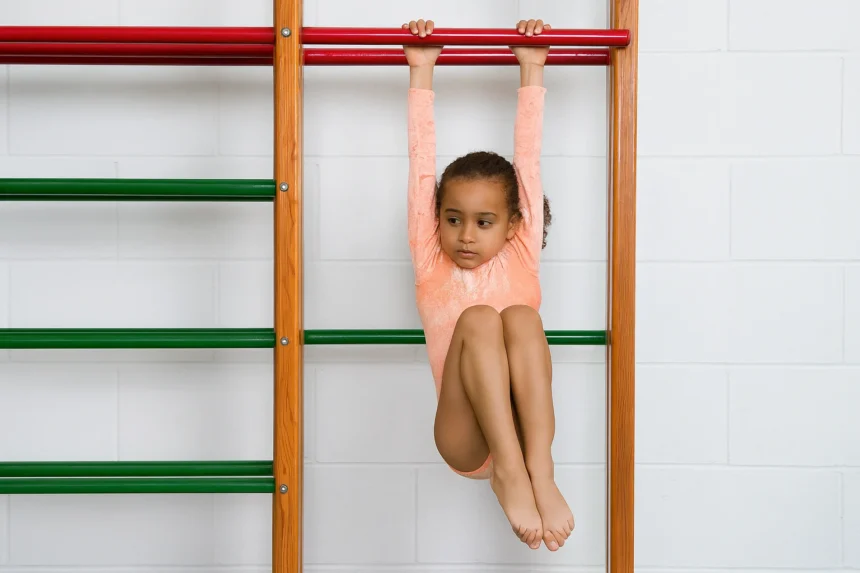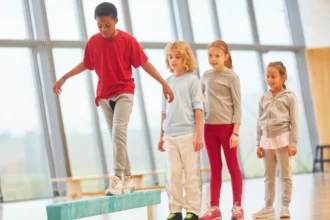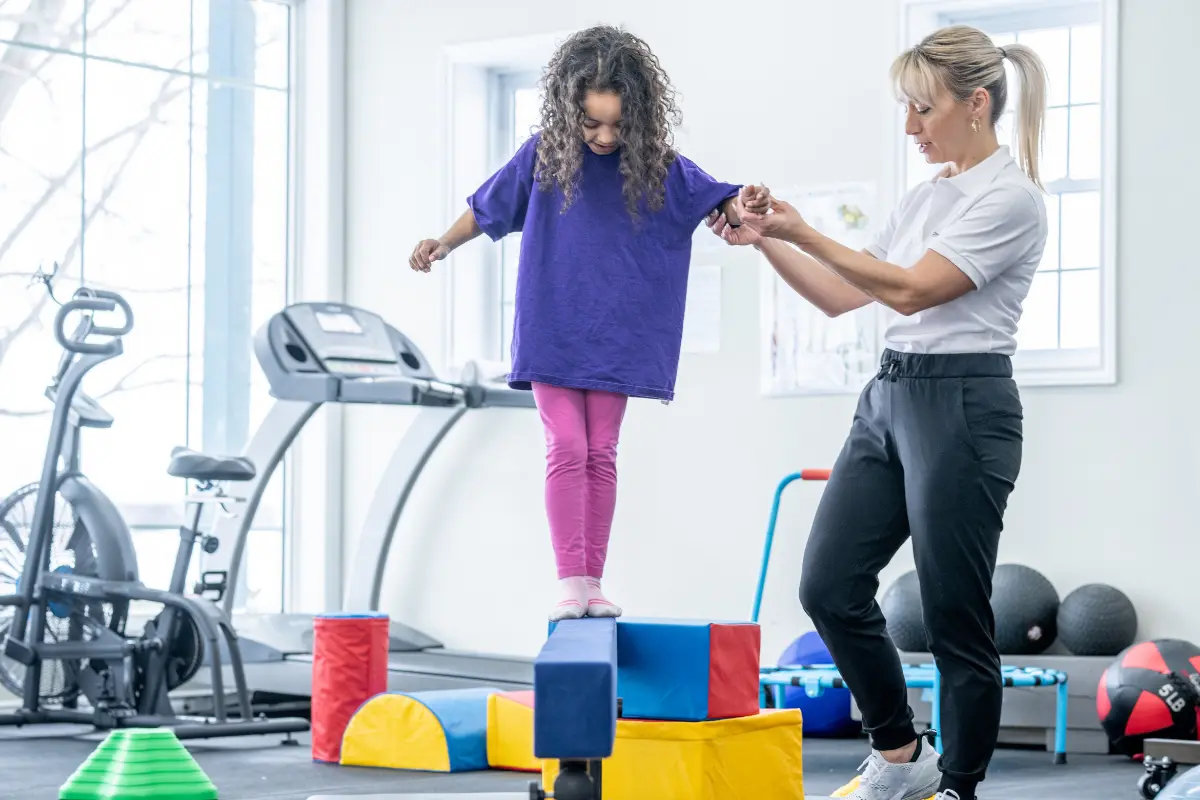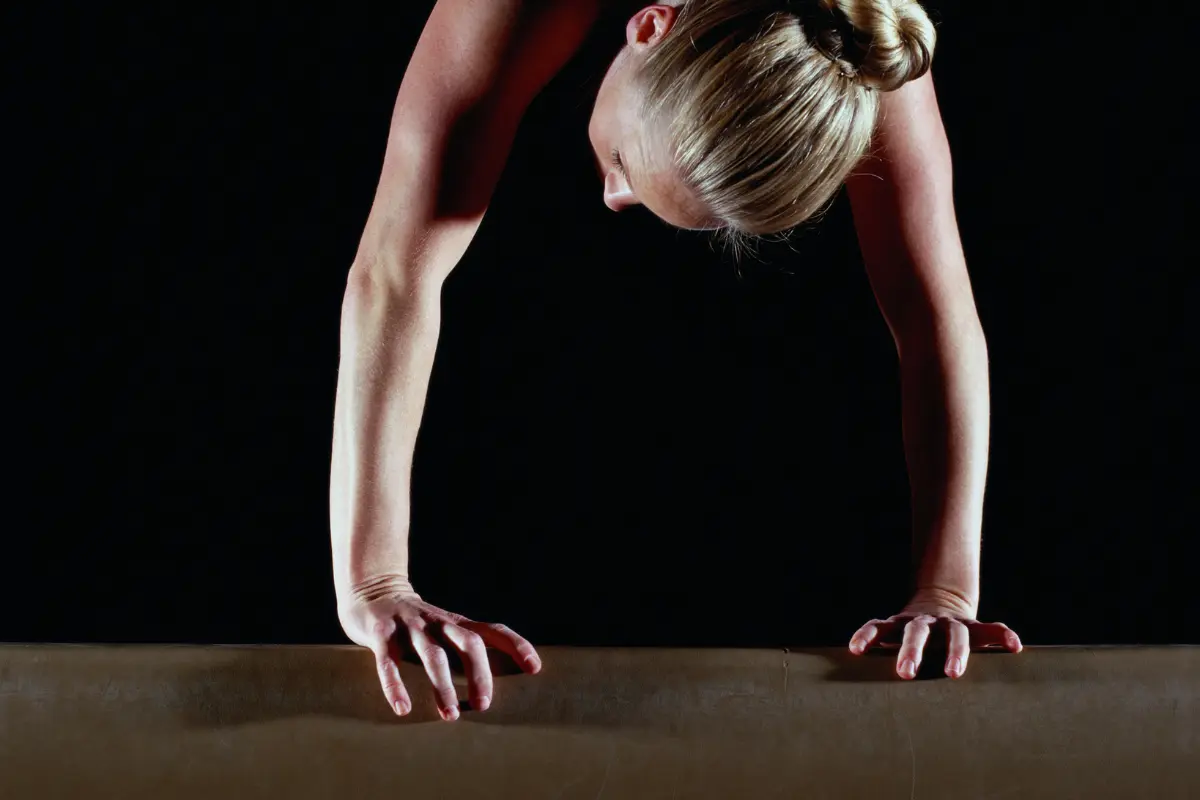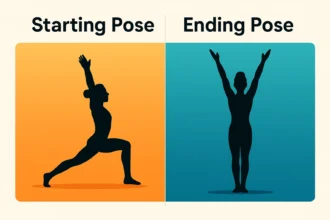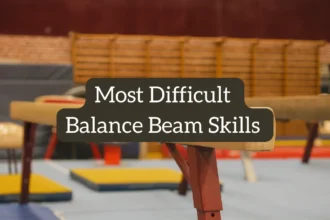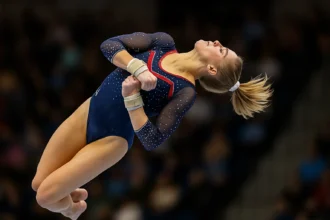When children are first introduced to gymnastics, the single bar becomes a mini playground for building strength, flexibility, and confidence. In Coach Amy Eggleston’s lesson, each activity is carefully designed to be age-appropriate while still laying the groundwork for skills they’ll use in competitive gymnastics later on.
Here’s a closer look at five key bar skills for beginners, how they work, and what they teach.
1. Pike Hang
The pike hang is a simple yet powerful way to engage a child’s core and leg muscles. The gymnast hangs from the bar with legs straight out in front, toes pointed.
Benefits:
This position strengthens the stomach muscles, hip flexors, and leg muscles all at once. It also encourages proper toe-pointing and tight body form, which are essential in higher-level bar skills.
How to Do It:
- Hang from the bar with a firm grip.
- Lift legs to hip height, keeping knees straight.
- Point toes for clean form.
Coach Tip: Match the hold time to the gymnast’s age—four-year-olds aim for four seconds, five-year-olds for five seconds, and so on. This builds tummy and leg strength while reinforcing good posture in the air.
2. Skin the Cat
A favorite for developing shoulder mobility and getting comfortable upside down, “skin the cat” is a rolling movement through the arms and shoulders.
Benefits:
This movement stretches and strengthens the shoulders, increasing flexibility for skills like giants and dismounts. It also helps young gymnasts get comfortable with turning upside down, a big step in building confidence on bars.
How to Do It:
- Hang from the bar with hands shoulder-width apart.
- Thread the feet inside the arms and rotate the body backward through the arms.
- Continue rotating until the legs pass over the head and the body flips through.
Why It Works: It gently stretches the shoulders while boosting courage for inverted skills. Plus, it’s a fun way for young gymnasts to get used to turning completely upside down.
3. Hot Dog
This sideways hang is all about strength and control. The gymnast hooks their feet over the bar while hanging sideways, then pulls their nose toward the bar.
Benefits:
This drill builds arm and stomach strength while encouraging body awareness. It’s a fun way to introduce pull-up motions without calling them “pull-ups,” which can feel intimidating for beginners.
How to Do It:
- Stand beside the bar and hook feet over it.
- Hang sideways with the bar in front of the body.
- Pull nose (or chin) to the bar for as many reps as the gymnast’s age.
Coaching tip:
Keep hands in a sideways grip and ensure the chin pulls up to bar height. This will help them develop good pulling mechanics for future skills like pullovers.
4. Pullover
The pullover is a foundational move that appears in all compulsory gymnastics levels. From a hang, the gymnast first pulls their chin to the bar, then lifts their hips up and over until they land in a front support (hips resting on top of the bar, arms straight, toes pointed).
Benefits:
Pullovers are a must-have for all compulsory levels and beyond. They strengthen the arms, core, and back while teaching control during the hip lift and rotation.
How to Do It:
- Start hanging from the bar.
- Pull chin to the bar.
- Lift hips up and over while keeping legs straight and toes pointed.
- End in a front support position with arms straight.
Coach Tip: Encourage strong, straight arms and a smooth motion over the bar. Good technique here will help with more advanced bar skills later.
5. Pullover + Cast Back Hip Circle
Once a gymnast has mastered the pullover, it’s time to combine it with a cast back hip circle. This move introduces dynamic motion and teaches control while rotating backward around the bar.
How to Do It:
- Begin with a pullover to front support.
- Cast by pushing hips away from the bar while swinging the legs slightly.
- Pull toes toward the nose to start the backward rotation.
- Roll around the bar in a smooth circle.
- Finish in front support with strong, straight arms.
Why It’s Important: The cast back hip circle strengthens the arms and core, builds rhythm on the bar, and prepares gymnasts for advanced circling skills.
Coaching tip:
When casting, remind them to lift their hips, not just swing their legs. During the circle, pulling toes toward the nose helps keep the motion tight and efficient.
The Bigger Picture: Fun Now, Strength for the Future
Coach Amy emphasizes making these bar exercises playful so children enjoy them without feeling like they’re just “working out.” Each skill builds upper body and core strength, a must for progressing in gymnastics. Starting young not only helps kids develop the necessary muscle groups but also boosts their comfort and confidence on the bars.
With moves like the pike hang, skin the cat, hot dog, pullover, and cast back hip circle, young gymnasts get a mix of fun, challenge, and the building blocks they’ll need for future routines.


